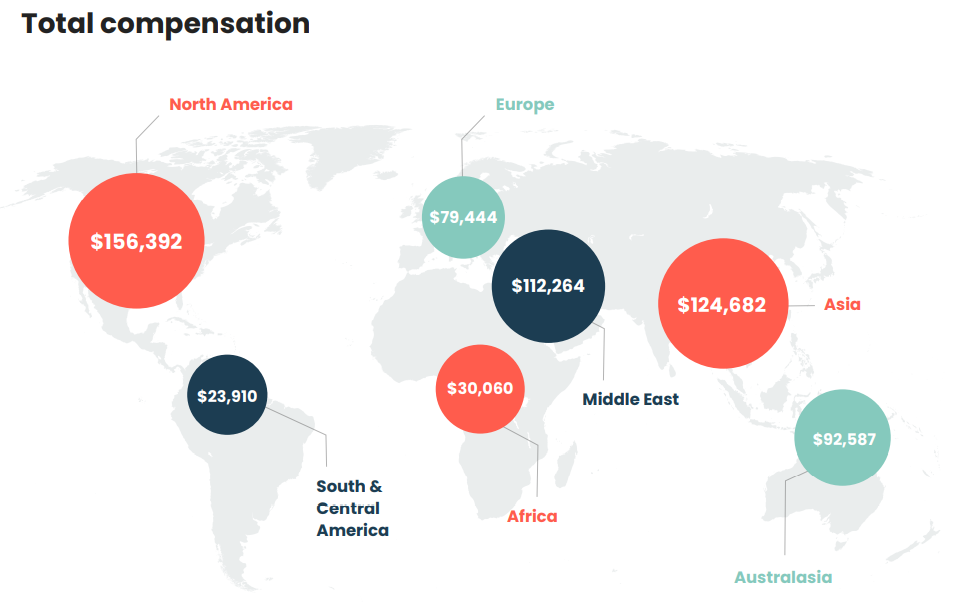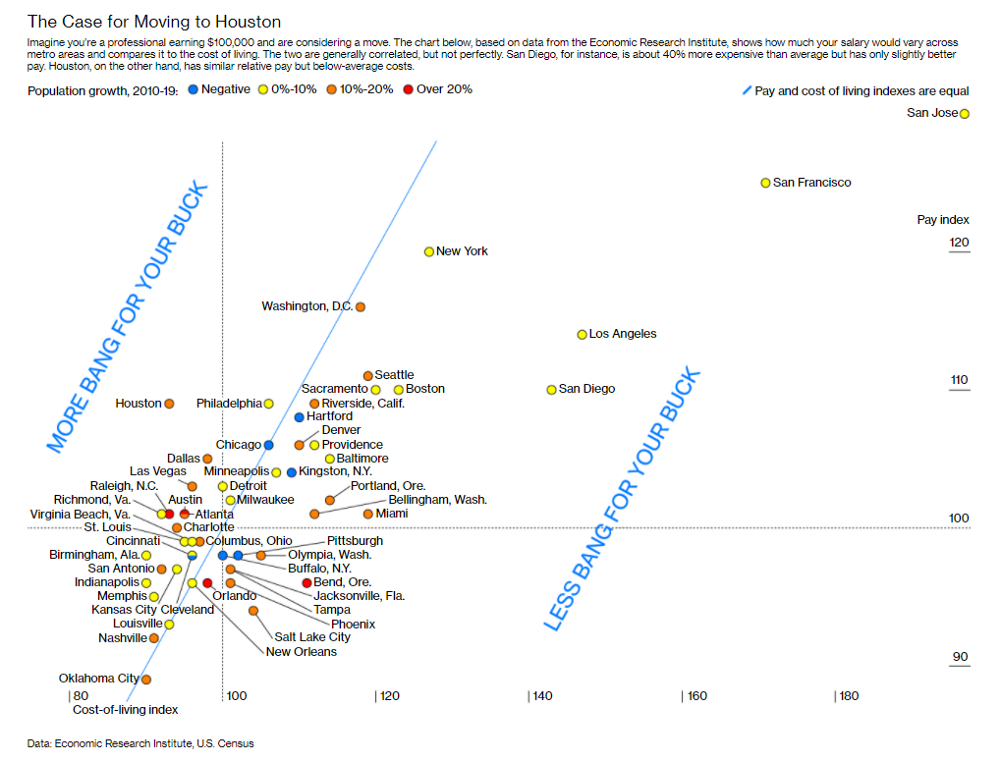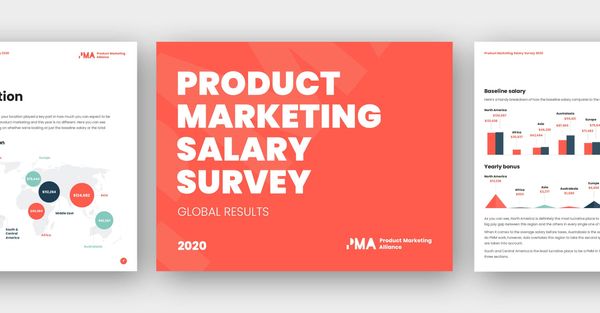Arm yourself with hard data on your market worth, and maybe some hard truths too.
If there’s a single question that product marketers should have an answer to, its: “What am I worth?” Not existentially, but in cold hard cash. Market understanding is at the heart of what we do — and that includes knowing our own market rate.
Before you walk into your next job negotiation, or even take a call with a recruiter, read through the 2020 Salary Report to arm yourself with intel in 2021.
It’s up to us to be armed with the facts to assume our places in the post-new-normal.
Here are some survey standouts — focusing on 3 gaps revealed by the data.
Gap 1: Location
Your earning potential isn’t just about the work you put in — but also where you live.

The report reveals extreme variations in salary based on geographical location. While variances aren’t surprising per se, the size of these gaps are.
Consider that the same core skillset can be valued at $134,587 in North America, $71,482 in Europe, and $23,910 in Latin America. That’s 5.6x higher earnings for a U.S. vs LatAm PMM — assuming they’re in California, Washington, or New York which have the highest salaries.

When it comes to permanently remote workers, it gets even more interesting. The 2019 and 2020 reports found that it’s more profitable to be full-time remote vs office-based. But as Business Week has reported if more companies like Redfin, Slack, and Box move to localize salaries for remote workers based on cost of living rates this advantage may evaporate with location becoming an immediate determinant of pay. U.S. PMM’s: I highly recommend this Business Week chart showing which cities offer the best bang for your salary buck if you’re considering a move.
Gap 2: Gender
The gender gap is here too. Male product marketers outearn women by over $10k in baseline salary. And compared to 2019, the gap has actually widened, not shrunk.
Although this is a known disparity in the marketing industry overall as reported by Marketing World and others, I will admit disappointment.
It’s ironic that while all of us are striving to secure recognition for product marketing as a field, many female practitioners aren’t compensated equally for their contributions in service to that field.
It’s incumbent we ask ourselves: Why do we have this difference? What can we do about it? How can we actively participate in closing this gap? Let this fresh data be an excuse to look even more critically at our practices, our candidates, and our decisions as we move into the new year.
PS: request to PMA, can the 2021 report cover race too so we can better evaluate and confront any gaps that may exist here too?*
*We hear you Rebecca; readers, let us know what else you'd like to see in our report for 2021 in the comments. 😉
Gap 3: pre/post-COVID aspirations
When asked about COVID’s impact on “salary expectations and aspirations” I was bracing myself for a stark gap from the pre-pandemic era. Happily though, COVID hasn’t dashed all hopes for higher pay.
Almost 40% said COVID had no impact on their salary goals for the rest of 2020. And while 23% had expected a pay raise before the pandemic, they were now “less optimistic” but not entirely without hope. By contrast 8% had a pay cut this year and 14% are under pay freezes — disappointing, but perhaps better than we might have expected.
If attitude is everything, the bright(-ish) outlook of PMM salary expectations signals a less-than-terrible gap before and after a year deemed the worst in recent memory.
Compare this to other fields and product marketing sure sounds like a fairly decent career path right now. (And after 2020, I’ll take it!)
One asterisk: Q4 and EOY results may have either reaffirmed or darkened this optimism since responses were initially collected.
Bridge your own “gap” and read it
Not gonna lie…it’s fun to peer into info like this that is so often kept quiet and close to the chest. But we’re living in a changing world where salary conversations are coming out of the shadows and product marketing is no exception — thanks to data like this.
So much more I could say here…but over to you now. Glean what you can from the 3000+ responses and approach your next negotiation ready with facts to back up your ask.
What stands out to you from this report?


















 Follow us on LinkedIn
Follow us on LinkedIn




.svg)
Start the conversation
Become a member of Product Marketing Alliance to start commenting.
Sign up now